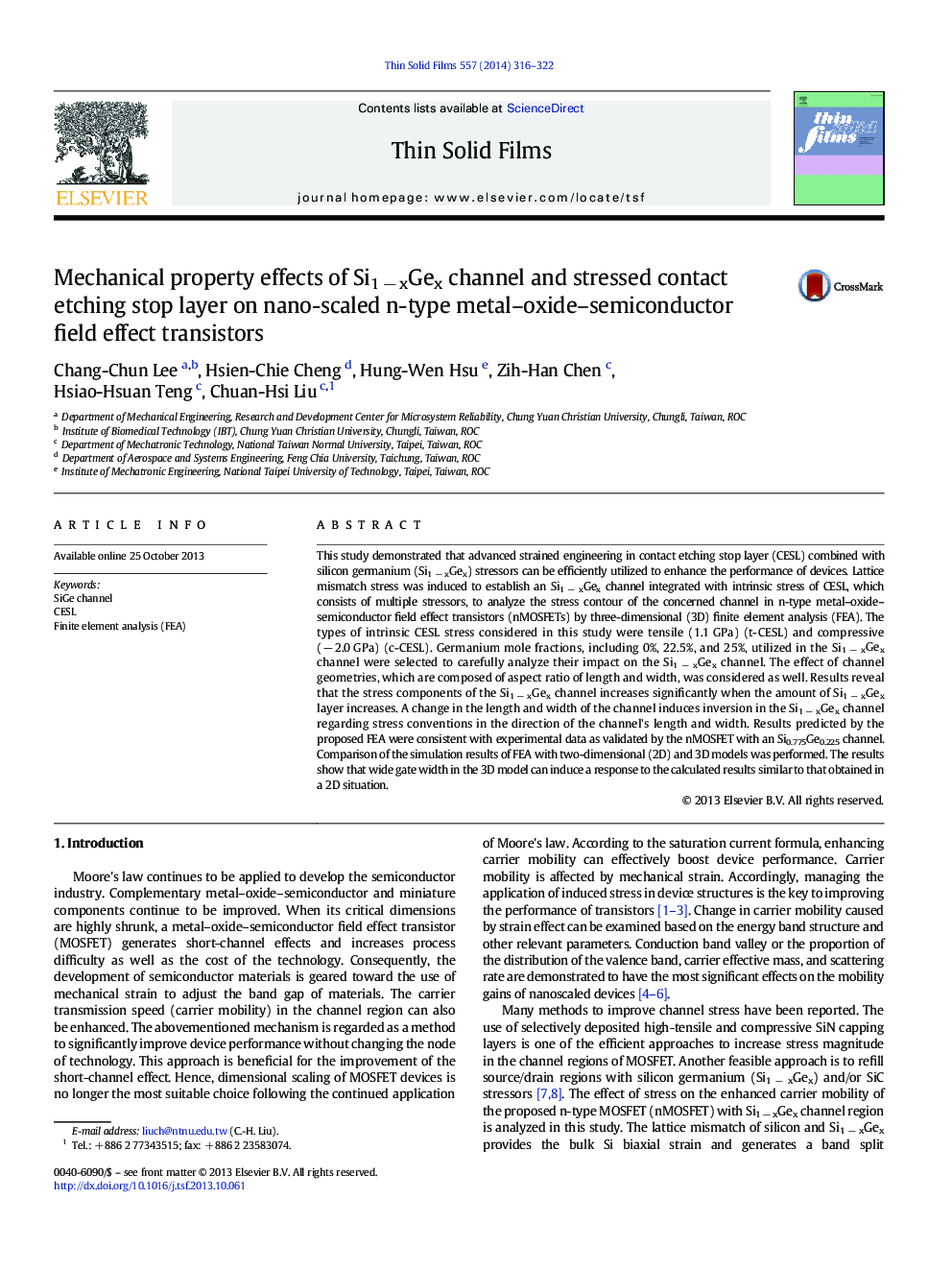| Article ID | Journal | Published Year | Pages | File Type |
|---|---|---|---|---|
| 8035213 | Thin Solid Films | 2014 | 7 Pages |
Abstract
This study demonstrated that advanced strained engineering in contact etching stop layer (CESL) combined with silicon germanium (Si1 â xGex) stressors can be efficiently utilized to enhance the performance of devices. Lattice mismatch stress was induced to establish an Si1 â xGex channel integrated with intrinsic stress of CESL, which consists of multiple stressors, to analyze the stress contour of the concerned channel in n-type metal-oxide-semiconductor field effect transistors (nMOSFETs) by three-dimensional (3D) finite element analysis (FEA). The types of intrinsic CESL stress considered in this study were tensile (1.1 GPa) (t-CESL) and compressive (â 2.0 GPa) (c-CESL). Germanium mole fractions, including 0%, 22.5%, and 25%, utilized in the Si1 â xGex channel were selected to carefully analyze their impact on the Si1 â xGex channel. The effect of channel geometries, which are composed of aspect ratio of length and width, was considered as well. Results reveal that the stress components of the Si1 â xGex channel increases significantly when the amount of Si1 â xGex layer increases. A change in the length and width of the channel induces inversion in the Si1 â xGex channel regarding stress conventions in the direction of the channel's length and width. Results predicted by the proposed FEA were consistent with experimental data as validated by the nMOSFET with an Si0.775Ge0.225 channel. Comparison of the simulation results of FEA with two-dimensional (2D) and 3D models was performed. The results show that wide gate width in the 3D model can induce a response to the calculated results similar to that obtained in a 2D situation.
Related Topics
Physical Sciences and Engineering
Materials Science
Nanotechnology
Authors
Chang-Chun Lee, Hsien-Chie Cheng, Hung-Wen Hsu, Zih-Han Chen, Hsiao-Hsuan Teng, Chuan-Hsi Liu,
